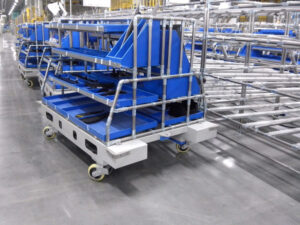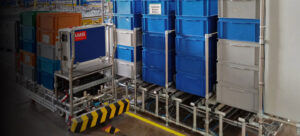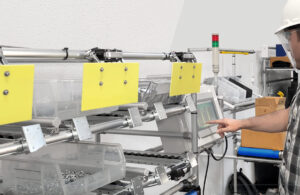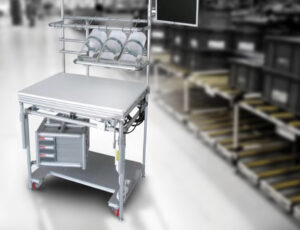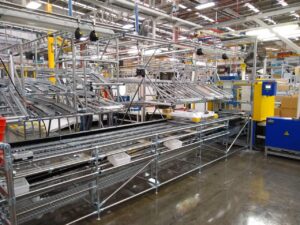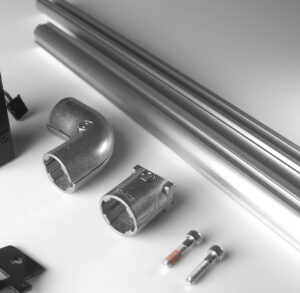ESD Safety in Action: How to Minimize Static Risks and Maintain Productivity
Table of contents
ESD Safety in Action: How to Minimize Static Risks and Maintain Productivity
Static electricity can wreak havoc on electronic devices, causing serious damage and compromising their functionality. In the world of electronics manufacturing, static risks must be minimized to ensure the smooth operation and longevity of the products. One effective solution for minimizing static risks and maintaining productivity is the use of ESD protection.
ESD safety measures provide a comprehensive approach to safeguarding electronic devices from the damaging effects of electrostatic discharge. By implementing proper ESD safety measures, such as grounding, ionization, and shielding, manufacturers can significantly reduce the risk of static-related failures. With ESD safety equipment, businesses can confidently navigate the challenges of static electricity, ensuring high-quality products and uninterrupted productivity.
Identifying Common ESD Hazards in the Workplace
When it comes to maintaining productivity and minimizing static risks in the workplace, it’s essential to identify the common sources of static electricity and ESD hazards that can exist in your environment. Understanding these hazards will not only help you better protect your equipment but also ensure the ESD safety of your personnel.
Hazard 1: Human Interaction
Believe it or not, we humans can generate static electricity simply by moving around. When we walk on certain types of flooring materials or handle non-conductive objects, we can accumulate and discharge static charge, posing a risk to sensitive electronics. This hazard is particularly significant in environments where people are wearing insulating footwear or clothing made of synthetic materials.
Hazard 2: Workstation Setup
Improper workstation setups can also contribute to ESD risks. For instance, if workstations are not properly grounded, the chance of electrostatic discharge increases. Inadequate grounding disallows the dissipation of static charge, creating an environment prone to ESD events. Additionally, the use of non-ESD-safe furniture and equipment can also generate and accumulate static electricity, further elevating the risk.
Hazard 3: Equipment and Material Movement
Another common ESD hazard in the workplace is the movement of equipment and materials. When items are transported or shifted, friction can generate static charges. This is particularly true when using non-conductive tools or containers. Moreover, cartwheels made of non-ESD materials can create an insulating effect, leading to charge buildup and discharge, potentially damaging sensitive electronics.
Identifying these common ESD hazards empowers us to take appropriate ESD safety measures to minimize risks and protect our equipment from damage.
Training Employees: Building ESD Awareness and Best Practices
When it comes to ESD safety and maintaining productivity in the workplace, one of the most crucial steps is training employees about electrostatic discharge (ESD) risks and prevention techniques. Without proper knowledge and awareness, employees may unknowingly engage in activities that generate static electricity, putting themselves and the company’s equipment at risk.
Understanding ESD Risks
ESD (electrostatic discharge) refers to the sudden flow of static electricity between two objects. While it may seem harmless, ESD can severely damage electronic components and sensitive equipment. Therefore, it is vital to educate employees about the risks associated with ESD, from small-scale damage to complete system failure. By understanding the consequences, employees are more likely to take preventative measures seriously.
Prevention Techniques
Training programs should focus on equipping employees with knowledge about various prevention techniques. These techniques include but are not limited to:
- Proper grounding: Ensuring all equipment, workstations, and personnel are properly grounded to dissipate static charges.
- ESD-safe clothing and equipment: Encouraging the use of ESD-safe clothing, such as smocks or wrist straps, as well as ESD-safe tools and equipment to minimize static build-up.
- Workspace organization: Encouraging employees to keep their workstations tidy and free from unnecessary static-generating materials, such as plastic wrappers or adhesive tapes.
- Proper handling techniques: Instruct employees on how to handle sensitive electronic components correctly, such as using proper grounding techniques when touching or moving them.
Creating an ESD Safety Control Plan
Establishing an ESD safety plan is an essential step in minimizing static risks within the workplace. This comprehensive plan should outline the practices, procedures, and equipment necessary to maintain a static-safe environment.
Assessing the Work Environment
The first step in creating an effective control plan is to assess the work environment. Conduct an audit to identify areas where ESD risks are high, such as locations with sensitive equipment or employees regularly working with electronic components.
Developing Standard Operating Procedures
Once potential risks are identified, it is important to develop clear and concise standard operating procedures (SOPs) outlining best practices for ESD safety. These SOPs should cover topics such as proper grounding techniques, handling protocols, and the use of ESD-safe clothing and equipment. SOPs should be readily available to all employees and regularly updated as needed.
Selecting ESD Control Measures
To further mitigate ESD risks, an ESD control plan should include the selection and implementation of appropriate control measures. These measures may include ESD-safe workbenches, grounding mats, wrist straps, ionizers, and ESD-safe storage solutions. The specific measures chosen will depend on the nature of the work environment and identified risks.
By training employees and implementing a comprehensive ESD control plan, companies can minimize static risks, protect their valuable equipment, and maintain productivity.
Managing Static in Production and Assembly Areas
In manufacturing and assembly areas, the control of static electricity is crucial to ensure the safe and uninterrupted operation of equipment and processes. Here are some tips and techniques that can help minimize static risks in these areas.
Grounding Techniques
- Equip the workstations with proper grounding: Ensuring that workstations are properly grounded is essential for minimizing static risks. Every workstation should have a reliable grounding system to dissipate any accumulated static charges. This can be achieved by connecting the work surface, equipment, and personnel to a common ground using grounding cords and straps.
- Implement a comprehensive grounding program: Establishing a comprehensive grounding program throughout the production and assembly areas is crucial. This program should include regular inspections and testing of grounding connections, as well as providing training to employees on proper grounding techniques and procedures.
Ionization
- Install ionizers: Ionizers are effective tools for neutralizing static charges in the air, for ESD safety. These devices generate positively and negatively charged ions that neutralize charges on surfaces and prevent electrostatic discharges. Installing ionizers in critical areas, such as assembly lines and packaging stations, can significantly reduce static risks.
- Regular maintenance: It is important to regularly clean and maintain ionizers to ensure their optimal performance. Any buildup of dust or contaminants on the ionizer’s emitter points can hinder its effectiveness. Additionally, periodic calibration and verification of ionizers should be carried out to guarantee accurate ion output.
Humidity Control
- Monitor and maintain appropriate humidity levels: Maintaining proper humidity levels in production and assembly areas is vital to minimize static risks. Low-humidity environments can lead to an increase in static charges, while high humidity can cause other challenges. Monitoring and controlling humidity levels within the recommended range of 40-60% can help mitigate static issues.
- Use humidity control devices: In areas where humidity control is challenging, the use of humidity control devices, such as humidifiers or dehumidifiers, may be necessary. These devices help regulate and maintain optimal humidity levels, providing a more controlled environment to minimize static risks.
By implementing these tips and techniques, manufacturing and assembly areas can effectively control static electricity, reducing the risk of damage to sensitive equipment and maintaining productivity.
The Benefits of a Static-Free Workplace
Implementing proper ESD safety measures not only helps to minimize static risks but also offers a range of benefits for businesses. Let’s explore some of the advantages of maintaining a static-free workplace:
Improved product reliability
By effectively minimizing static risks, businesses can significantly improve product reliability. Electronic components that are not exposed to damaging electrostatic discharges are more likely to perform consistently and have a longer lifespan. This, in turn, enhances customer satisfaction and reduces costly warranty claims.
Reduced downtime
ESD-related failures can lead to unexpected downtime, resulting in lost production time and increased maintenance costs. By implementing proper ESD control measures, businesses can reduce the likelihood of costly downtime caused by component failures. This allows for smoother operations and increased productivity.
Cost savings in the long run
Investing in ESD safety measures may require an initial cost, but it can result in substantial long-term savings. By minimizing the risk of ESD-related damage, businesses can avoid costly repairs or replacements of damaged components. Additionally, reducing the occurrence of failures can lead to fewer product recalls, saving both money and reputation.
By implementing proper grounding techniques, utilizing ESD-safe materials and equipment, and educating employees on best practices, we can significantly reduce the chances of costly ESD incidents. However, we must remember that ESD safety is an ongoing process that requires constant awareness and action to stay ahead of potential risks. Armed with knowledge and a commitment to safety, we can navigate the landscape of static risks and maintain an environment conducive to productivity.
Take the first step towards safeguarding your business and ensuring ESD safety. Contact AMS today for tailored solutions. Together, let’s build a protected and productive work environment that minimizes the risks of ESD incidents. Remember, ESD safety is an ongoing commitment that demands proactive measures. Trust AMS to be your partner in creating a safer tomorrow.
We look beyond the scope to surpass your expectations
We understand the importance of retaining a strong working relationship with our customers. AMS provides a niche for everyone through excellent customer care and top-rank products.






